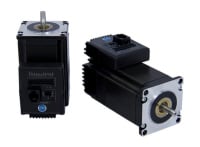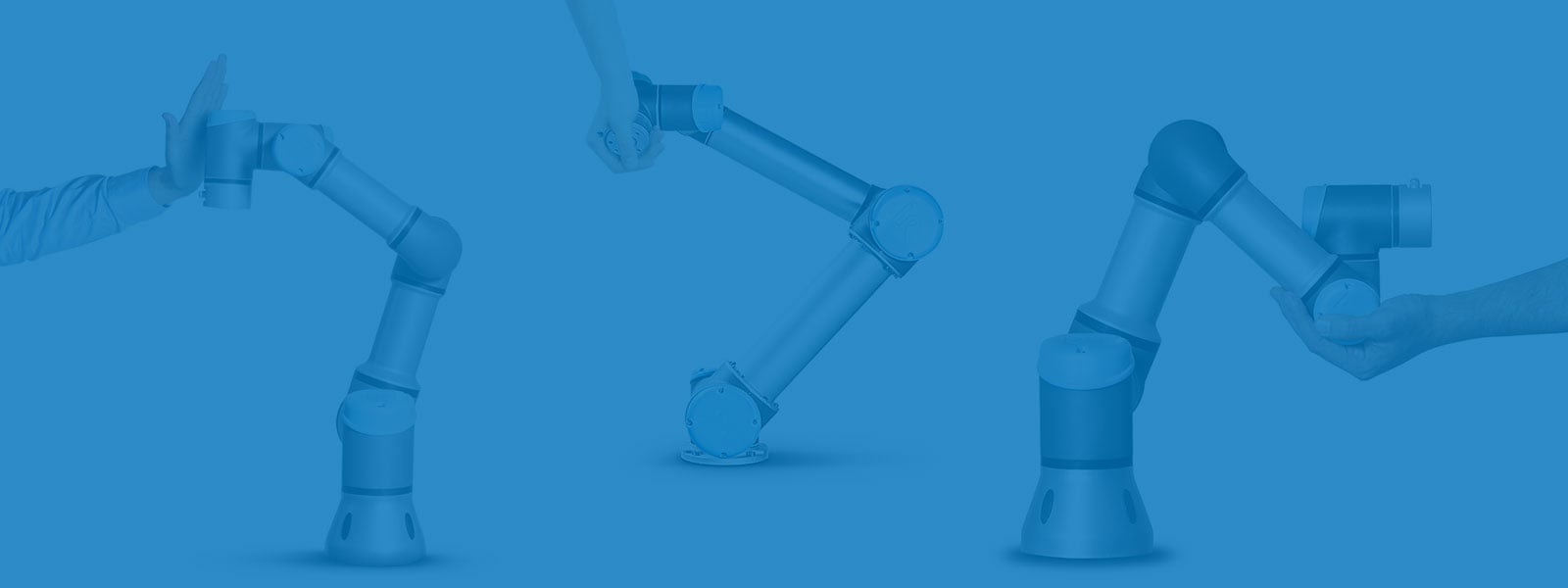This post is brought to you by Bimba Technical Tips.
Steppers and servos can be used with Bimba OLE actuators. They are the best motor technologies for position control. The choice of which to use is dependent on speed, torque, price, and often lead time. The following discussion explains the differences between the two technologies.
Step motor design
 Step motors are called “digital motors” because they move in steps, like the hands on a clock. When the first coil is energized, the rotor teeth align with the teeth in the first stator winding and hold position. When the second winding is energized, the teeth in the rotor move slightly and align with the second stator winding and hold position. The total movement in this example is one full step.
Step motors are called “digital motors” because they move in steps, like the hands on a clock. When the first coil is energized, the rotor teeth align with the teeth in the first stator winding and hold position. When the second winding is energized, the teeth in the rotor move slightly and align with the second stator winding and hold position. The total movement in this example is one full step.
There are usually 200 steps per revolution, each step being 1.8°. The step motor was made possible by the development of electronic step motor controllers. Electronics are required to energize the windings with proper voltage and current, with the proper phase, in the right sequence, at the right time. Controllers have evolved to be able to move step motors in as many as 20,000 steps per revolution, providing 100 times finer movement (0.018° per step).
Step motor system components
In order to understand step motor performance it is helpful to understand the components of a step motor based system.
Motor and actuator:Consider the motor and actuator together to be equivalent to an arm. It will not move without power.
- Output: Thrust and speed to move the load.
- Input: Power from the stepper drive.
Drive: The device that provides muscle to move the arm is called the drive.
- Output: Provides power to the motor windings in the right amount and in the right sequence to make the actuator “arm” move in the desired direction. A drive requires a source of electric power, such as a DC power supply. The voltage output of the DC power supply is transferred through the drive directly to the motor windings. The current and voltage on the motor windings are proportional to motor torque output and therefore to actuator thrust output. In general, the higher the voltage and current, the more thrust. Above a point, an increase in current only raises motor winding temperature instead of torque output.
- Input: Accepts step pulses and a direction command from the controller. Each electronic step pulse produces a change in the way the motor windings are energized which in turn causes the motor to turn one step which in turn makes the actuator move.
Controller: Think of the controller as the brain that commands the muscle.
- Output: Provides step and direction pulses to the driver. Also provides various outputs to the PLC, including communications via a bus (RS232, RS485, Ethernet IP, Profibus, el. al.), in-position signal, alarm and fault outputs, and others.
- Inputs: Inputs are managed intelligently and systematically from a variety of sources.
- Magnetic switches
- Sensors elsewhere on the machine
- PLC outputs
- Bus communications from a PLC
- Encoder signal from the motor
Encoder: The encoder is the “eye” of the system. It tells the controller whether its command has been followed. The controller compares the step pulses it has sent to the driver to pulses it receives from the encoder. If the pulses it sends are equal to the pulses it receives, the controller knows its command has been followed. If they are not equal, the controller makes an adjustment to the motor until it receives the correct number of encoder pulses.
The system block diagram conveniently separates all functional components for the purposes of discussion. It is common for manufacturers to combine functions. For example, controllers often have built in drives, and some have built in power supplies. Some motors have built in encoders, and some have built in drives and controllers as well. Some PLC’s have built in controllers.
Step motor performance
Step motors have inherent advantages:
- Step motors are the least expensive position control motor technology.
- Step motors can be used open loop, without an encoder.
- Step motors provide very high torque at low speeds.
- Available in NEMA frame sizes which standardize mounting and shaft diameters.
Step motors have inherent drawbacks:
- Although step motors provide high torque at low speeds, torque output drops off rapidly as speed increases.
- Step motors can lose sync; that is, lose synchronization with the step pulses from the controller. In other words, step pulses from the controller are converted into power to the windings of the motor, but the motor does not rotate. This will happen when the torque required to move the load exceeds the torque capability of the motor at the desired speed. To avoid this issue:
- Increase the motor size. Size the motor to provide double the maximum required torque.
- Reduce speed to the point where motor torque is sufficient.
- Increase voltage to the motor windings (large power supply).
- Increase current to the motor windings (large power supply).
- Use an encoder to monitor position and correct for missed steps.
- Difficult to synchronize because error correction is made at the end of stroke, not continuously in real time.
Servo motor design
A servo by definition is any device with feedback. Servo motors have coils on their stator which are energized in sequence by a servo drive or amplifier, causing rotation (spinning) of the magnetic rotor. In order for the controller to determine what winding to energize next, it must know the current position of the rotor. This sensing is done using either hall sensors or a dual-function encoder.
Servo motor system components
The block diagram of a servo system is identical to the block diagram of a step motor system, although the technology of the components is different. The servo amplifier is the functional equivalent of the step motor drive. As with step motors, functions are often combined by manufacturers.
Servo motor performance
Servos have inherent advantages:
- High speed
- High acceleration
- High precision
- More torque at higher speeds
- Can readily synchronize multiple motors (real time error correction)
Servos have inherent disadvantages:
- More complex system than step motors
- Motors must be tuned for optimal performance
- More costly system than step motors
- Less torque at lowest speeds compared to step motors
- Non-standard mounting geometries (vary by manufacturer) and shaft diameters
- Less torque than comparably sized step motors at low speeds
Implications for use with electric actuators
Whichever technology is used, it must be matched to the actuator design.
- A servo at low speeds may not achieve the same low speed actuator performance as a step motor.
- Replacing a step motor with a servo on the same actuator will not necessarily result in more thrust at higher speeds because other actuator components may limit performance.
Depending on the application, there are advantages to both motor technologies. The table below may be used as a guide.
| Step Motor | Servo Motors | Implication for Actuator |
|---|---|---|
| Provide more torque at low speeds | Provide more torque at low speeds |
May require special actuator components |
| Less expensive | More expensive | Steppers minimize cost. |
| Can be synchronized with moderate accuracy | Can be synchronized with high accuracy | Servo is the preferred choice for multi-axis applications. Special controllers are required. |
| Error correction at end of stroke | Error correction continuously on the fly | Servo is the preferred choice for precise positioning. In order to realize improved accuracy, anti-backlash nuts may be required. |
| No encoder required | Encoder required | |
| Simple systems | Complex systems | |
| Can lose sync | Impossible to lose sync | |
| No tuning required | Tuning is critical | Performance of a servo actuator may be severely compromised if the servo is tuned improperly. |
| Standard sizes enable easy mounting interchangeability | Lack of size standardization provides challenges | Before deciding on servo compatibility, be certain a servo will mount to the actuator. May require special motor mount and coupler. |




